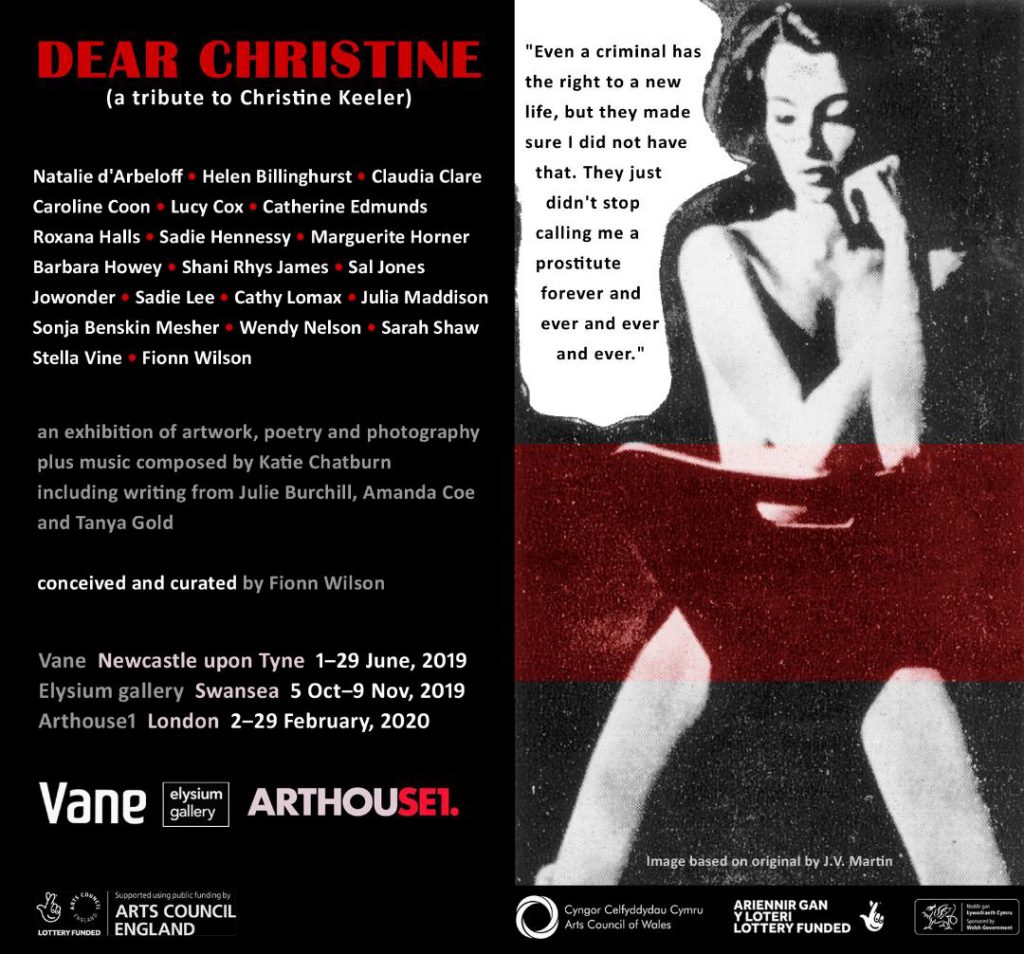
‘The Underworld of Zos’ 2019, oil painting by Jowonder
I first read about Christine Keeler on my paper round, as a thirteen-year old delivering varied newspapers to the varied houses of a Surrey village, gaining some rudimentary political education comparing headlines of the red tops and broadsheets, as well as which house had what. I thought Christine very beautiful, with that long lustrous hair, and was intrigued that she’d had sex with a Russian.
Sure, the sexual revolution was dawning at the time, but the Sun wasn’t up. This was the era in which we heard a judge in the ‘Lady Chatterley’ trial say: ‘You wouldn’t give this book to your wives or servants’. I’ve always thought of the early 60s as linked to the Edwardian era, and so it was, as the public hurled judgement at Christine and her friend Mandy Rice Davies— she of the wonderful line, ‘Well, he would, wouldn’t he’, to the counsel who informed the court that Lord Astor denied knowing her.
Discretion is the polite word for hypocrisy. Christine Keeler
It usually takes a revolution, coup or general election to bring down a government, but Harold Macmillan’s was brought down by this teenager, whose private sex life was exposed by two working class lads fighting over her. Only in Britain, eh? And desire of course, which the British upper classes were so hypocritical about and confused by, feeling freer to transgress with working class girls, rather than ‘one of their own’. Yet it was Christine Keeler who was to burn in shame, and who, like Monica Lewinsky years later, will always be remembered for having sex with a powerful man.
It’s been a misery for me, living with Christine Keeler. Christine Keeler
A touring art exhibition Dear Christine, opens at Tyneside on 1st June. It’s fabulous—in the sense that it examines a fable—with images of Christine that include painting, ceramics, sculpture, music, film, poetry, performance, artist talks and workshops. There are portraits with that slight, quirky overbite, the high cheekbones, and the vulnerability. The Game a grid of significant others by Natalie d’Arbeloff who points up Christine’s simultaneous power and powerlessness. Sadie Hennessy’s Christine Keeler Cake with attendant hypoclitical (oops, typo, but nice one) I mean hypocritical verbiage from stuffy 1960s matrons.
Jowonder’s epic, magical epic painting, The Underworld of Zos, where Christine levitates herself from the lower orders into the ‘kissing circle of the elite’, shows that elite as the low ones. Sadie Lee’s painting of an aging Christine in ‘that chair’ is poignant and well done, as is curator and painter Fionn Wilson’s homage to the beauty of Christine, based on one of Lewis Morley’s other portraits. Yes, Christine had been iconised by the Establishment, who surely thought of her as their bit of rough.
There are many riches in this exhibition, Pauline Boty, a founder of the sixties British Pop Art movement painted Christine in the now lost work Scandal ‘63, and Caroline Coon exhibits a homage to the missing work. There are also previously unseen photographs, courtesy of James Birch, a curator and friend of Christine’s.
There’s good writing in the catalogue too from Julie Burchill, artist Cathy Lomax, Amanda Coe (screenwriter and executive producer of the upcoming BBC series The Trial of Christine Keeler) art historian Kalliopi Minioudaki and Christine’s son Seymour, who remembers on what a good mother she was.
This is Fionn Wilson in the press release “Christine Keeler is a significant figure in British history yet there is little recent artistic reference to her. I wanted to add to the visual record of her life, which represents themes still relevant to this day including class, power and the politics of sex. The participating artists are women who offer their own perspective on a narrative that has mostly been led by men”.
Indeed. Shame is the modern stocks. As a woman behaving in a sexually-free way, Christine Keeler was shackled, and this exhibition releases them. Never mind the background of deprivation and sexual abuse; that she was passed around the rich and powerful, as she was around members of her own family in a dysfunctional childhood. The Establishment’s prurience and money-grubbing tabloids were to haunt her for the rest of her life. She became a recluse, the press hunting her like a wounded deer, tracking her ageing.
I was not living, I was surviving. Even a criminal has the right to a new life. Christine Keeler
This exhibition channels Christine through the lens of judgement, not of her, but of the hypocritical, sexually repressed system that used her as a scapegoat. Interesting that the Guardian’s obituary mentions early on that she was having simultaneous sex with (haven’t married men with lovers always had simultaneous sex?) John Profumo MP, the Secretary of State for War, and Evgeny Ivanov, the Soviet Naval officer, who, incidentally, MI5 were trying to ‘turn’. Had Christine been a honey trap and turned him (as opposed to on) she might have got an OBE— the same honour bestowed on John Profumo decades later. Interesting too, watching Sue Lawley OBE’s interview of her in 1989 when the film Scandal was released, barely concealing the judgment in her voice and body language. The actor John Hurt (Stephen Ward in the movie) looked on with affection and compassion. Like an artist.
There’s an old Chinese proverb Fame is the first disgrace. Yet not everyone seeks it.
Dear Christine opens at Vane in Newcastle upon Tyne on June 1st, then tours to Elysium in Swansea and to Arthouse1 in London.
Jan Woolf
An edited version of this article appeared in the Morning Star, June 1st.

